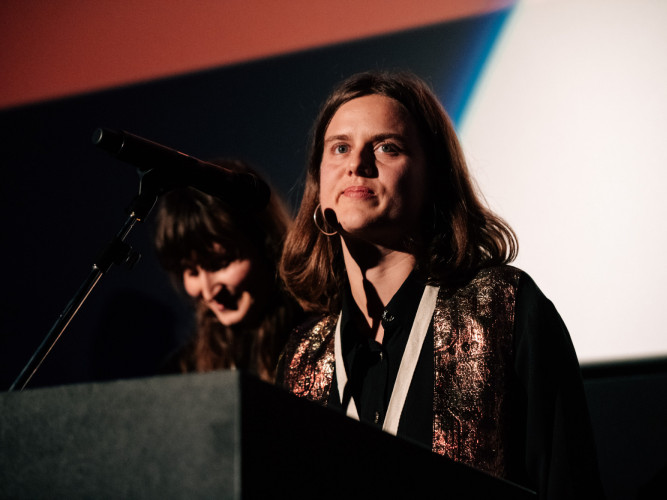Despite Canada’s enormity, it shares only one land border with another nation, the United States to the south. It is an impossibly vast and wildly diverse country. Inhabited by Indigenous people for thousands of years, the land was colonized by the British and French in the 16th century. In present-day Canada, the population is a mix of many ethnic groups, including Indigenous peoples (First Nations, Inuit, and Métis). While English and French are the two official languages, there are still more than 60 Indigenous languages spoken. Accordingly, Canadian cinema is highly eclectic, influenced by language, geography, and various cultural communities. The eight curated programmes presented here showcase the complexity of this cinema as well as its evolution through history.
One of the key institutions in Canadian film is undeniably the National Film Board (NFB). Established during World War II with war-oriented films, the NFB is now a leader in documentary, animation, and interactive experiences. Postwar, new innovative departments were created, thanks to which we now know the work of animator Norman McLaren, Direct Cinema documentarians Pierre Perrault and Michel Brault, as well as Colin Low and the Challenge for Change / Société Nouvelle project, which focused on giving voice to Indigenous filmmakers. More recently, the NFB has grown into a public film and digital media producer and distributor funded by taxpayer money through the Department of Canadian Heritage.
After the 1970s, French-speaking Quebec filmmakers distanced themselves from documentary and animation to pursue fiction. They delved into personal narratives, themes around language, and explored political disillusionment in their characters and storylines. Two referendums (1980 and 1995) asked the population whether Quebec should pursue sovereignty and become an independent country. Voters rejected secession both times, but the referendums impacted the political tenor of the times. Filmmakers like Denys Arcand, Léa Pool, André Forcier, and Francis Mankiewicz created existentialist works about Quebec society and its distinctive character, language, and culture within Canada.
Outside big cities like Montreal, Toronto, and Vancouver, cinema was always a difficult art to fund, but a remarkable epicentre of independent cinema emerged in Winnipeg. Through the Winnipeg Film Group, films were funded, produced, and shown in their own cinematheque. Thanks to this vibrant community, Winnipeg gave us filmmakers such as Guy Maddin, Deco Dawson, Caroline Monnet, Matthew Rankin, and Ryan McKenna.
Canada and its land inevitably bring to mind an image of mysterious wilderness and infinite possibilities. Its complicated history notwithstanding, the country prides itself on societal values of tolerance, freedom of speech, and respect. These have produced a cinema that is daring and resolutely punk in its attitude. There is an abundance of perspectives and creativity born of the diversity of voices that come from disparate and sometimes marginalized communities.
Émilie Poirier
Behind the MascMuch like elsewhere, masculinity is in crisis in Canada. The male protagonists in this programme oscillate between their desire for self-determination and a longing for connection with other boys and men – whether through familial ties, friendships, or erotic encounters.
In Gabriel Gagnon’s «Sikiitu», an Inuit youth from Ivujivik, the northernmost village of the province of Quebec, is searching for male role models. He is ashamed of his father and instead looks to a rather problematic white money rapper. In Sarah Pellerin’s «Mon Boy», the young protagonist is increasingly alienated by the toxic behaviour of his older brother and his gang during a bachelor party.
«Lay Me by the Shore» by David Findlay is a laconic and accessible look at the emotional depth of a trans teenager who has just lost his best friend. In Jeremy Comte’s «Fauve», a dare game between two boys takes a dramatic turn. And finally, «Nuit blonde» by Gabrielle Demers asks us to discard our biases about the sexuality of marginalized men – in this case, an autistic man and a young sex worker.
What the films have in common is that they see the crisis of male ideals as an opportunity to replace rigid gender norms with more inclusive masculinities – in the plural.
Kuratiert von Lea Heuer
with the kind support of: 

















